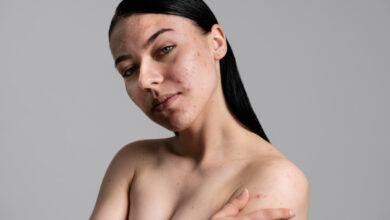Understanding Skin Lightening Treatments: Procedures and Considerations

Skin lightening treatments have gained significant popularity worldwide, driven by a desire to achieve a more even complexion, reduce hyperpigmentation, and address various skin discolorations. However, the quest for lighter skin involves complex considerations, from understanding different treatment options to being aware of potential risks and ethical implications. This comprehensive guide delves into the procedures, benefits, risks, and considerations associated with skin lightening treatments, offering a balanced perspective for those contemplating these methods.
Types of Skin Lightening Treatments
- Topical Treatments
Topical treatments are the most commonly used skin lightening methods. They involve applying creams, gels, or serums that contain active ingredients designed to reduce melanin production or accelerate skin cell turnover. Common ingredients include: Skin lightening treatments have become increasingly popular worldwide for various reasons, ranging from addressing hyperpigmentation to achieving a more even skin tone. Elocon Cream, a potent topical corticosteroid containing mometasone furoate.
- Hydroquinone: A powerful skin lightening agent that inhibits melanin production. Typically available in concentrations of 2% for over-the-counter products and higher for prescription formulations.
- Kojic Acid: Derived from fungi, kojic acid works by inhibiting the tyrosinase enzyme, which plays a crucial role in melanin production.
- Vitamin C: Known for its antioxidant properties, vitamin C can brighten the skin and reduce the appearance of dark spots.
- Retinoids: These vitamin A derivatives promote cell turnover and reduce hyperpigmentation.
- Chemical Peels
Chemical peels involve applying a solution to the skin that causes controlled exfoliation, removing the outer layers of skin to reveal fresher, lighter skin beneath. Types of chemical peels include:
- Glycolic Acid Peels: Suitable for superficial pigmentation issues and providing overall skin brightening.
- Trichloroacetic Acid (TCA) Peels: Effective for more significant pigmentation problems but require longer recovery times.
- Phenol Peels: The strongest type of peel, used for deep pigmentation issues, but with significant downtime and potential side effects.
- Laser Treatments
Laser treatments use focused light energy to target and break down melanin in the skin. Types of laser treatments for skin lightening include:
Q-switched Nd
Lasers: Effective for treating dark spots, melasma, and tattoo removal by breaking down melanin pigments.
- Fractional Lasers: Promote skin regeneration and improve overall skin tone and texture.
- IPL (Intense Pulsed Light): Uses broad-spectrum light to target pigmentation issues and improve skin tone.
- Microdermabrasion
Microdermabrasion involves using a device with a diamond-tipped wand or fine crystals to exfoliate the outermost layer of skin. This procedure helps in reducing superficial pigmentation and enhancing skin radiance.
Cryotherapy
Cryotherapy uses liquid nitrogen to freeze and remove pigmented skin lesions. It is effective for treating age spots, sun spots, and other localized hyperpigmentation.
Benefits of Skin Lightening Treatments
- Even Skin Tone: Skin lightening treatments can help achieve a more uniform complexion by reducing dark spots, melasma, and other forms of hyperpigmentation.
- Enhanced Confidence: Many individuals seek skin lightening treatments to feel more confident about their appearance.
- Youthful Appearance: By reducing pigmentation irregularities, these treatments can contribute to a more youthful and radiant look.
- Treatment of Specific Conditions: Conditions like melasma, post-inflammatory hyperpigmentation, and age spots can be effectively managed with these treatments.
Risks and Side Effects
While skin lightening treatments can offer significant benefits, they also come with potential risks and side effects, especially if not used correctly or supervised by a professional:
- Skin Irritation and Sensitivity: Topical treatments, especially those containing hydroquinone and retinoids, can cause redness, peeling, and increased sensitivity to sunlight.
- Hyperpigmentation or Hypopigmentation: Improper use of chemical peels and laser treatments can lead to uneven pigmentation, causing either dark or light spots.
- Allergic Reactions: Some individuals may experience allergic reactions to certain ingredients used in skin lightening products.
- Long-term Health Risks: Prolonged use of certain skin lightening agents, particularly hydroquinone, has been linked to potential health risks such as ochronosis (a bluish-black discoloration of the skin) and potential carcinogenic effects.
- Scarring: Invasive procedures like deep chemical peels and laser treatments carry a risk of scarring if not performed correctly.
Ethical and Cultural Considerations
The pursuit of lighter skin is deeply rooted in societal and cultural perceptions of beauty, which vary widely across different regions. It is important to approach skin lightening treatments with an understanding of these cultural nuances and the potential psychological impact:
- Body Image and Self-esteem: For many, lighter skin is equated with higher social status, beauty, and success. This perception can lead to pressure to undergo skin lightening treatments.
- Cultural Pressures: In some cultures, there is significant pressure to conform to beauty standards that favor lighter skin, which can influence individuals to seek skin lightening treatments.
- Ethical Marketing: The promotion of skin lightening products should be done ethically, avoiding the reinforcement of harmful stereotypes and ensuring that consumers are fully informed about potential risks. Tretinoin Cream, also known as retinoic acid, works by increasing cell turnover and exfoliation, which helps to unclog pores, reduce acne, and improve overall skin texture. These properties also make it effective in treating hyperpigmentation and uneven skin tone.
Guidelines for Safe and Effective Skin Lightening
- Consult a Dermatologist: Always seek professional advice before starting any skin lightening treatment. A dermatologist can recommend the most appropriate treatment based on your skin type and concerns.
- Patch Test: Perform a patch test before using any new topical product to check for allergic reactions or sensitivity.
- Follow Instructions: Adhere strictly to the usage instructions provided by your healthcare provider or the product manufacturer to avoid overuse and potential side effects.
- Sun Protection: Use broad-spectrum sunscreen with SPF 30 or higher daily to protect your skin from UV damage and prevent further pigmentation issues.
- Avoid Illegal Products: Steer clear of unregulated or illegal skin lightening products that may contain harmful ingredients like mercury or high concentrations of hydroquinone.
- Monitor Progress: Regularly monitor your skin’s response to treatment and report any adverse reactions to your dermatologist immediately.
- Maintain Realistic Expectations: Understand that achieving significant skin lightening safely takes time, and results can vary based on individual skin type and condition.
Conclusion
Skin lightening treatments encompass a variety of methods ranging from topical creams to advanced laser therapies. While these treatments can offer benefits such as a more even complexion and improved skin radiance, it is crucial to approach them with caution, informed consent, and an awareness of potential



